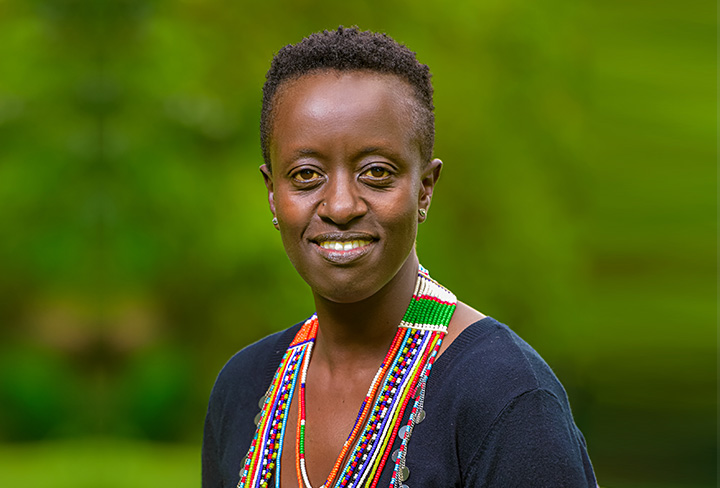
By Phoebe Nadupoi
He was a celebrated Safari Guide doing what he loved in a landscape he knew, like the palm of his hands. Then, he got thrust into an emerging space and took up conservation leadership. DANIEL SOPIA has been at the helm of Mara Conservancies’ regional body since 2017, helping communities to create and develop conservancies as a sustainable form of land use, highlighting the need to continuously invest in the landscape for people, nature, and climate. PHOEBE NADUPOI chatted with him and now shares his thoughts about leading conservation in the Mara.
You were a celebrated Safari Guide then you got thrust into conservation leadership. How did that change you?
That transition changed me from a business-focused to a community-focused person; I became a nurturer, mentor, and leader. But the change was natural as I had worked in the tourism industry and understood the potential impact of tourism in transforming community livelihoods through conservation. That realisation made my transition from tourism work to supporting the community to explore ways they could benefit from tourism. Conservation was the vehicle through which the community could benefit from tourism.
Conservancies were already transacting business before the establishment of MMWCA, as there were eight conservancies by 2013. What has changed since MMWCA’s establishment?
MMWCA was able to provide better coordination and amplify conservation benefits to the local people, which led to a mindset change and eventual behaviour change resulting in the establishment of more conservancies. More and more people came out to put their land into conservation.
Besides coordination, we strengthened conservancies’ governance, ensuring they had proper structures in place and could bring landowners together, as well as ensuring there was equity and clear benefit-sharing mechanisms.
Why does MMWCA’s work count?
MMWCA gives a voice to the conservancies and plays an advocacy role, thereby acting as a link between the community, government, and other critical players. MMWCA brings the much-needed resources to fill the gap that tourism leaves.
What’s the role of the Maasai Community conservation? (What’s the investment of the local community? What price do they pay for the protection of biodiversity?)
The Maasai are conservationists by nature and have taken wildlife as part of nature with a right to live, and their way of life has enabled coexistence between people and their livestock and wildlife. Indeed, the Maasai community has contributed to the successful biodiversity protection in the Mara, but they have paid the price. The interactions with wildlife have cost them lives and livelihoods, yet they have chosen to have their land in conservation to protect natural resources. The Maasai have made sacrifices for the sake of the country and the world at large.
What gets you out of bed in the morning?
What motivates me is the success and the achievements we have so far recorded, the benefits that the communities are getting from conservation, and the thriving wildlife numbers because of the work that we are doing. These things energise me daily and give me the confidence that our efforts are not in vain.
What are you most proud of about the work of the Association in the last ten years?
I am proud of the relationships we have cultivated amongst various stakeholders who are critical to the well-being of the Maasai Mara Ecosystem, bringing together the community, tourism investors, and the government, among other key players. I am glad we have spearheaded these relationships, which is part of our coordination work, given the community a voice in the industry, and put them at the centre of conservation to make decisions in using and managing natural resources.
What three lessons can you share from your leadership journey and that of MMWCA?
One is that when people come together for the common good, there will be notable results and success. The opposite is true: poor communication and lack of coordination lead to fragmentation, conflict, and unsustainability. The other lesson is that when people come together, they have a voice and can influence important decisions. Coming together also allows us to achieve more; we have notable results because of the collaboration between the community, government, and the private sector.
The Mara Conservancies’ model has proven to be relatively stable; what do you consider threats and challenges we need to manage for conservancies to thrive?
We must ensure that communities continue to benefit as it is a fundamental prerequisite to thriving conservancies. An uncoordinated approach and poor relationships are major risks that can reduce the recorded success and achievements. So, the other vital thing is to ensure the relationships between key players in the conservation space are coordinated well, sharing ideas and lessons and that each stakeholder is meeting their responsibility. Another threat is the changing policies because it can undo the success realised and slow the momentum. So, having a favourable policy environment ensures conservancies and conservation areas continue to thrive and that the people bearing the cost of living with wildlife benefit from it.
What’s the future like for community conservation in the Mara?
The future is promising because of the community’s goodwill and the support, relationship, and trust we have built between various stakeholders in the Mara. These important aspects are the foundations upon which Mara’s future will stand; therefore, we see more conservancies coming up and more people benefitting in the coming years.
What are MMWCA’s priorities for the coming decade?
Our biggest aspiration is to increase the area under conservation for people and wildlife to thrive. We are also looking at strengthening institutions to manage conservancies and conservation areas sustainably for the prosperity of all. Lastly, we will scale our engagement of women and youth as they play a significant role in realising these aspirations.





Thank you so much for your generosity and willingness to give your time and services to conserve our natural resources. Your support gives the Maasai people to accomplish their mission of conserving and protecting Mara diversity.